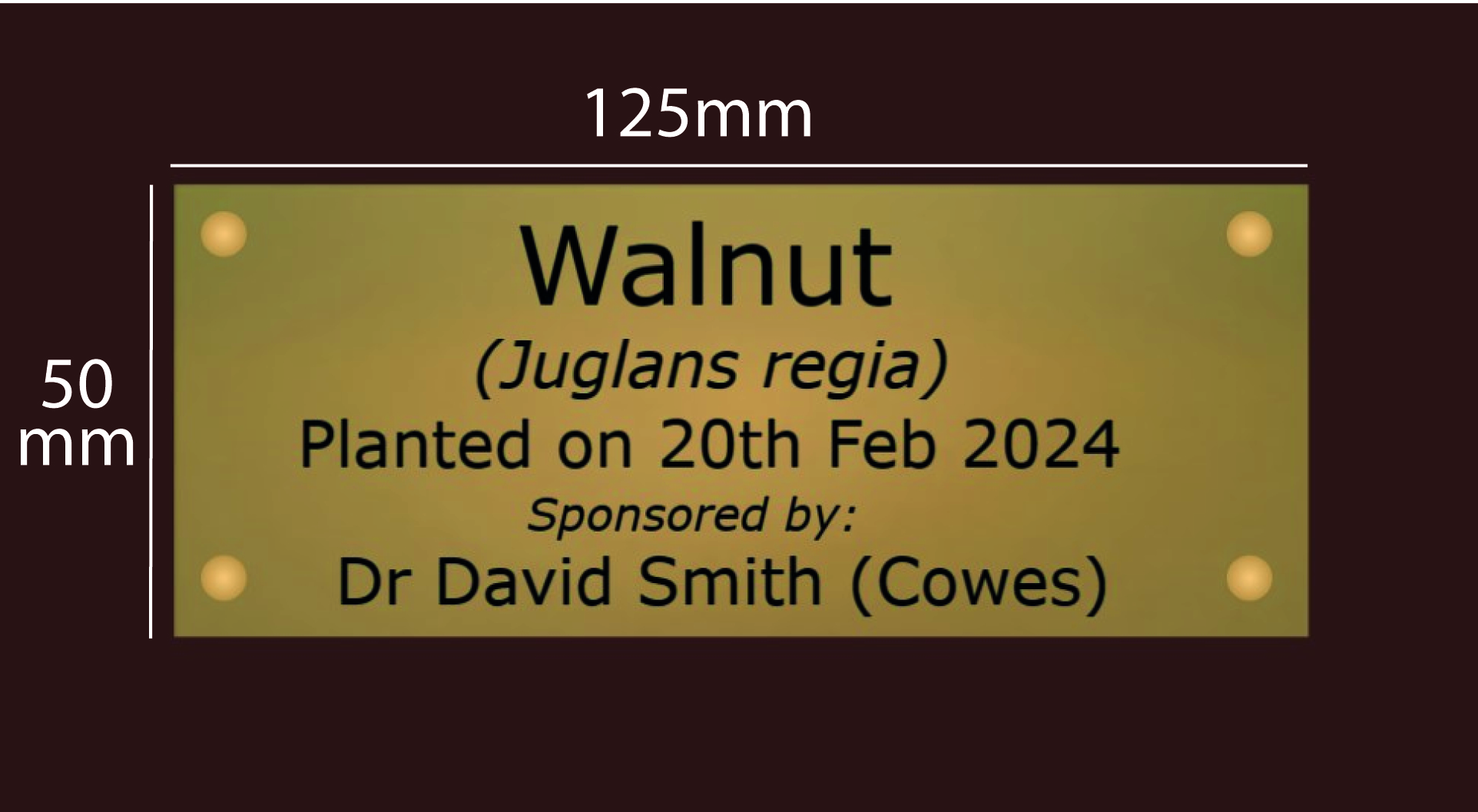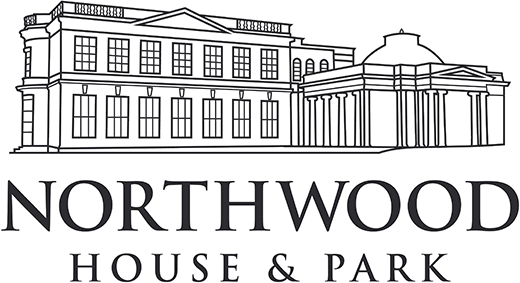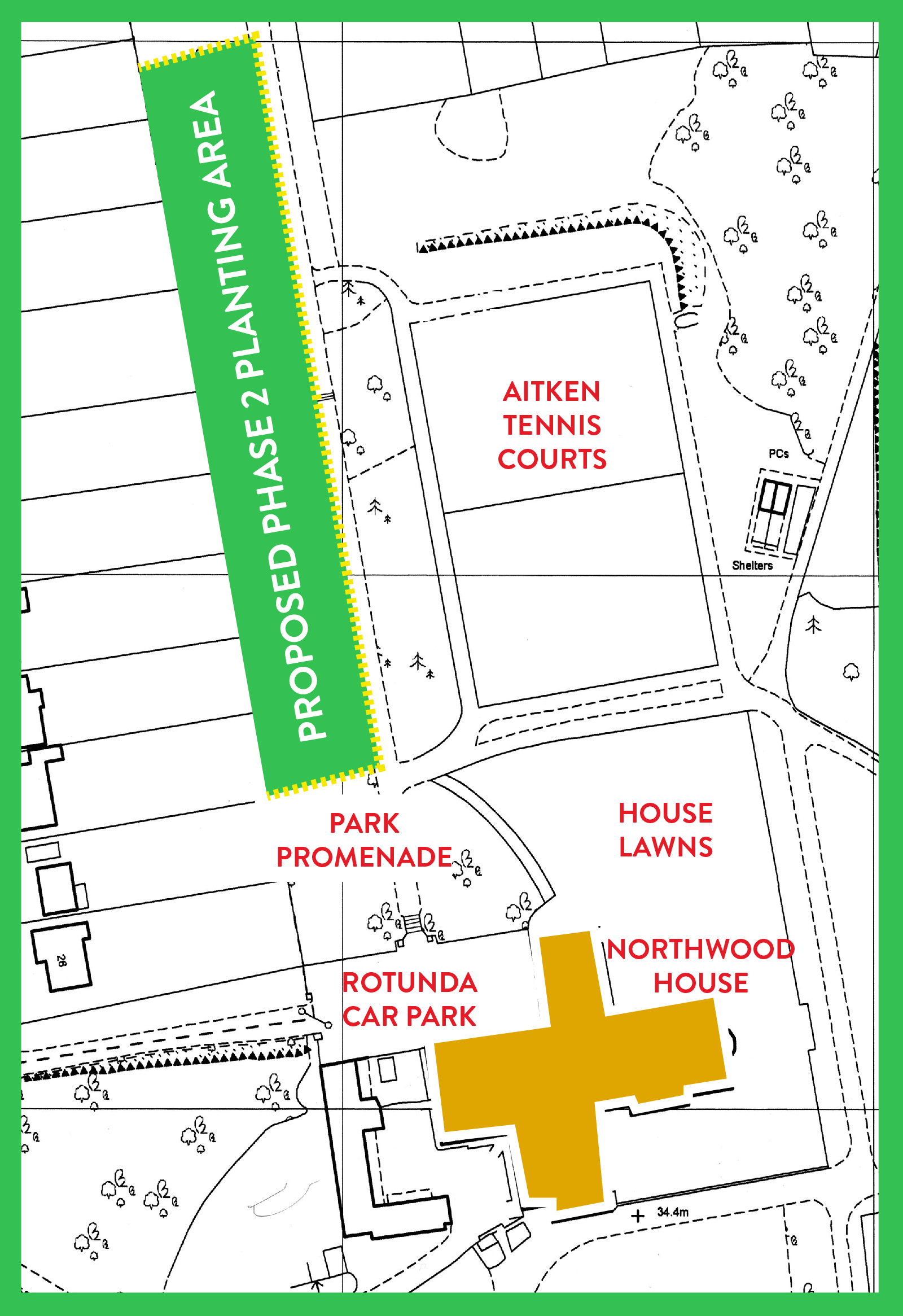
Sponsor a new park tree for future generations to enjoy from only £350
Northwood Park is one of the largest and most beautiful public green spaces in Cowes. It is visited by thousands of local residents and mainland visitors to the town each year, providing a fantastic outdoor recreational space for everyone to enjoy.
The park was originally planted through the 1800’s with an eclectic mix of tree species by the Ward family which have grown up over the last two centuries to create the parkland we know and love today. But with many trees reaching full maturity many years ago, the park is starting to lose some of its magnificent specimens as they come to the end of their natural lives. Old trees become more prone to disease and storm damage and eventually have to be removed, often on safety grounds. None of us like to see this when it happens, but that is part of the natural course of nature.
Northwood Charitable Trust Company Ltd is the custodian of Northwood Park, looking after it on behalf of the Island community. The Charity has a duty of care to make sure that Northwood Park continues to be a vibrant recreational asset at the centre of an important Isle of Wight conservation area overlooking the Solent. The natural beauty of the parkland has to be preserved and maintained to meet certain standards and therefore we need to start planting more trees now to provide this continuation before we start to lose more trees in the future.

The Charity has devised a phased tree planting plan that we are committed to implement over next couple of years to help address the need to provide a succession of new trees for the park. This has been designed in conjunction with local experts and with the blessing of the Isle of Wight Council’s Tree Preservation Officer and approves a selection of suitable trees and locations in the park for new planting.
We get dozens of requests every year from local people wishing to plant a tree in the park and we can now offer more individuals and organisations the official chance to sponsor a tree from our planting plan and help assist with ongoing maintenance costs for the first three years to make sure it gets established successfully.
Planting new trees is great for the environment and every one we plant will help in the battle to reduce the impact of the increasing carbon dioxide levels in the atmosphere.
In phase one of the plan in the Spring of 2024 the first 18 specimen trees were successfully sponsored and planted in parkland below Park Court towards Park Road, supported by new network of irrigation pipes. All of the trees have survived the first year of growing which is great news, with our volunteer team providing on going monitoring and watering when required in dry weather.
Phase two of the plan can now be planned for the late winter/early Spring of 2025, with another selection of trees available for sponsorship and planting in the promenade area of the park which is the path on the upper side of the park tennis courts.
How have trees been selected?
Trees have been selected and their locations chosen with four main parameters in mind:
1) Historic landscape and conservation area status
Northwood Park is located in a conservation area and preserving and enhancing the landscape for the future is of great importance. The park was planted with an eclectic mix of specimen trees from the early 1800’s which have grown up to create the landscape we know and love today. Replanting a mix of interesting specimen trees through the parkland to maintain a similar landscape is therefore a priority when choosing tree varieties.
2) Sustainability/Climate Change adaptation
It is scientific fact that our climate is warming at an alarming rate. What this means in terms of our future weather patterns is currently unknown, but more extreme weather is predicted by many experts. Drier Summers, wetter winters and stronger storm systems may all be in the offing, but temperatures are definitely on the rise.
We don’t really know what effect that rising temperatures will have on our current stock of trees, but a warming climate may bring new pests and diseases to our existing trees and planting some alternative tree species that are already tolerant to a more Mediterranean-style climate and the prevailing pests and diseases that are found there may have long term benefits in terms of sustainability.
3) Wildlife
Species have been chosen that will provide a food source for our native birds, and our most iconic mammal, the red squirrel. Helping support our local ecology is a priority.
4) Community
Attention has been given to selecting species that will encourage community engagement and foraging; thus promoting sustainability, well-being and public interaction. The use of some fruiting trees is one good way of doing this and some have been chosen specifically for this reason.
Where is the second phase of tree planting to be focused?
A number of locations within the park will need to have some new trees planted in the future, but in phase two of the project our attention is focused on the upper side of the park tennis courts along the popular “Promenade Path”. This area has lost some large tree specimens over the last twenty years due to storm damage and end of life maturity and decay. This is an important area of the park and easily accessible by walking up from the Rotunda car park. It was often used during World War 1 and 2 for walking and fresh air by patients recovering from their injuries in the Red Cross hospital located inside the main building. Up to 12 new specimen trees have been allocated for sponsorship in this area.
Where exactly will the trees be planted in the area?
The precise location for each tree wont be publicised in advance as we may have to reposition them slightly during the planting process . Each tree will be allocated to the location that is best suited to it and which the Charity has been advised will give it the best chance of establishing successfully.
What does tree sponsorship mean?
Sponsorship means making a one-off donation to help the Charity cover the purchase and planting costs of a new tree for Northwood Park and to contribute towards the maintenance costs for the first three years of its life.
New trees will be 4-5ft tall specimens from specialist nurseries. They will be supported by a wooden stake and provided with a guard to protect the lower trunk from mechanical damage and pests.
In thanks for this generous donation, the Charity will attach a small identification plaque to a ground stake next to the tree which will include the name of the sponsor (individual, family or organisation) as well as the Latin and common names of the tree and its planting date. The details of these plaques are set out below.
Other records of your sponsorship will be made and kept and are also noted below.
The sponsorship cost will be deemed a donation to the Charity for the purpose of planting a particular tree and will be eligible for Gift Aid where applicable. As a donor, you may also be eligible for tax relief on the amount given, although the Charity is unable to offer advice as to whether this is available in the case of any particular individual and would suggest you seek guidance from a suitably qualified person if you are uncertain as to whether you would be entitled to claim that relief.

Will I own the tree I sponsor?
No, as the landowner, the Charity will be and remain the sole owner of the tree, but as a sponsor you will be officially recognised as the person(s) or organisation who contributed to assisting the Charity in planting and caring for that tree for future generations to enjoy.
How do I choose a tree to sponsor?
You can simply select a tree from the planting list on this webpage, make the required donation payment and fill in the requested details. We’ll do the rest and get back in touch with you to confirm your sponsorship in writing.
Unfortunately, the trees are available on a first come first served basis for sponsorship. Its’ likely that interest and demand for tree sponsorship may outstrip supply and for those not fortunate enough to be able to sponsor a tree in phase one, don’t worry, future phases of planting are planned over the next couple of years.
We’ll be delighted to keep your name and contact details on file and inform you directly when the next selection of trees come available to sponsor.
When will planting take place?
We endeavour to plant trees sponsored before the 20th February 2025 by 17th March 2025 if weather and stock availability allows. This is to ensure that the trees are planted at a time which will give them the best chance of succeeding.
If weather and/or stock availability dictate that planting is unachievable within that time-frame or sponsorship of trees occur after this time, the trees will be planted between October and December 2025. If the tree has arrived but cannot be planted until the autumn, it will be cared for by the Charity’s staff and volunteers in the gardener’s secure area until that time.
No planting will take place between 17th March and 30th September 2025 as planting trees between that time means that they are less likely to establish successfully.
Who will plant and look after the tree?
Trees will be planted by professional contractors before ongoing care, monitoring and watering is provided by the Charity’s staff and volunteers. It will be the Charity’s mission to make sure the tree is well nurtured and is given the best possible chance to establish itself as a healthy growing specimen.
Can I watch the tree being planted?
You are welcome to watch the tree being planted, but we will be unable to make specific provision to schedule planting to meet your availability.
What happens if the tree dies or gets damaged?
A certain percentage of trees will not make it to maturity due to many factors and all sponsors need to acknowledge that there are certain risks involved. This is especially true when trees are planted in the public domain and mindless vandalism can occur. It should also be remembered that environmental challenges such as prolonged drought, water logging and disease may have an impact on the tree’s establishment. These are not within our control.
However, the Charity is committed to the following tree establishment timescales:
0-3 years after planting: The Charity will plant a replacement tree of the same species within 12 months. We can only commit to replacing an original tree once within that first 3-year period. This will be the case whether the tree dies or is destroyed through the acts of vandals.
If a replacement tree does not successfully establish, we will consider that the species was not suitable for that particular location (whatever the initial reason for replacement). Replanting for a third time would not be undertaken unless all further costs were covered by the original sponsor.
3+ years after planting: The Charity will continue to look after the tree alongside all of the other trees in the park, providing ongoing monitoring and maintenance. However, if the tree fails to grow successfully or dies after this point in time it will not be replaced under the terms of your sponsorship and your association with that particular tree and location will unfortunately end.
How long will my sponsorship last?
The sponsorship and your association with the tree will be valid for the life of the tree or its replacement as explained above although the Charity and Northwood House Charitable Trust Company Ltd are unable to provide any specific guarantees about the tree you have sponsored after 36 months from planting it.
How will my sponsorship be recorded?
We will provide four ways of recording your sponsorship:
- With a small plaque attached to a stake next to the tree. Only one plaque can be provided, so should this be removed, vandalised, or degraded over time, this shall not be replaced unless at the sponsor’s own cost and by an identical substitute obtained through the Charity. Plaque specifications can be found below.
- A digital record on the Charity’s website. A link will be provided.
- A paper record in the Charity’s archives.
- A written certificate of sponsorship will be provided by the Charity within one month of us planting the tree.
Are there any tax benefits?
If you are a UK taxpayer, your sponsorship donation to the Charity can be worth up to 20% more with the UK Government’s Gift Aid Scheme. This will help further with future maintenance costs for all of the park trees. We’ll send a Gift Aid Form to complete to every sponsor to complete where applicable and would be very grateful if this were to be filled in.
You may be entitled to tax relief on your donation. We cannot however assist in respect of seeking any personal tax relief to which you may be entitled and would recommend that you seek appropriate advice if needed.
List of trees available to sponsor and sponsorship donation cost:
Veteran Trees £750
These trees are in the most expensive category as they will all grow to become giants, add to the majesty of the park and live for hundreds of years. These majestic trees, carefully selected for their grandeur and longevity, represent the pinnacle of our offering. As the cornerstone of our categories these trees will become living legacies, destined to thrive for centuries and preserve nature’s magnificence in central Cowes for many future generations to come.
| Veteran Tree Species | Number available: |
| Cedar of Lebanon (Cedrus libani ) | 1 |
| Deodar Cedar (Cedrus deodara ) | 1 |
| Dawn Redwood (Metasequoia gyptostraboides) | 1 |
| Shitzu tree (Pinus montezumae ) | 1 |
Grove Trees £500
The presence of these trees in the park, whilst adding to its verdant tapestry, will foster a thriving habitat for wildlife, enhance the ecological balance in the park and support a legacy of environmental stewardship by providing wild creatures with sanctuary and ensuring their survival for generations to come. These selections are all new to the park and will also provide novel and intriguing colours, leaf textures and flowers, enhancing its beauty of the park across the year.
| Grove Tree Species: | Number available: |
| Foxglove tree (Pawlonia tomentosa ) | 2 |
| Southern Magnolia (Magnolia grandiflora) | 1 |
| Indian Bean tree (Catalpa bignoides ) | 1 |
Specimen Trees £350
All of the trees chosen in this group will bring their own unique benefits to the park, from wonderful flowers and beautiful autumn colours to species chosen for wildlife and community engagement. These trees offer a diverse array of delights, each with their own charm and purpose, contributing to the park with vibrant colours and sweet fragrances to create a visual spectacle that changes with the seasons. These species will also be hugely beneficial to pollinators and birds.
| Specimen Tree Species: | Number available: |
| Golden Rain tree (Koelreuteria paniculata) | 1 |
| Persian Ironwood (Parrotia persica) | 1 |
| Seven Son Flower tree (Heptacodium miconoides ) | 2 |
Details of sponsorship plaque
Each sponsored tree will be supplied with a small brass identification plaque measuring 125mm (wide) x 50mm (high) and will contain the following information:
- Latin name
- Common name
- Planting date
- Text starting either: a) Sponsored by or b) In fond memory of followed by Name of person/ Family / Organisation (all of which must fit within one line and a maximum of 22 characters)
We are unable to deviate in any way from this from this standard presentation and wording.
The brass plaque will have a wooden teak-coloured backing board and will be mounted on a ground stake and secured next to the tree. It is not to be replaced or supplemented by any other form of marking or commemorative item and anything added will be removed in order to ensure consistency between all the trees we intend to plant.
Example of plaque design with standard presentation:



